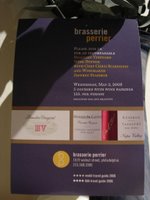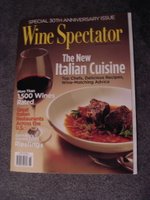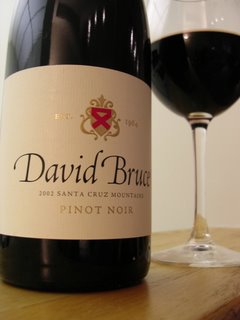 I was in Washington, D.C. a few weeks ago for a conference and I got the chance to have dinner with a couple who are among my and my wife’s closest friends. They are fellow foodies who recently moved to D.C. They recommended that we eat at a French restaurant they found that had quickly become one of their favorites—Bistro D’Oc.
I was in Washington, D.C. a few weeks ago for a conference and I got the chance to have dinner with a couple who are among my and my wife’s closest friends. They are fellow foodies who recently moved to D.C. They recommended that we eat at a French restaurant they found that had quickly become one of their favorites—Bistro D’Oc.
The restaurant is casual, unpretentious and has the atmosphere of an authentic Bistro. The daily specials are written on a large chalk board that the server walked over to our table. The simple wood furniture and worn hardwood floor give it a comfortable, Old-World feel. Importantly, there was no rush to finish the meal. My understanding is that the restaurant occasionally draws in international students from a nearby youth hostel, which certainly would add even more authenticity to the experience.
The first thing to hit our table was a bottle of the house cabernet sauvignon, a 2003 Domaine la Rosiere. This wine comes from a small winery in the Languedoc region and it was amazing. This wine was robust. It had a solid, well-balanced tannic structure with a red berry flavor and just a hint of spice.
I started off with the Chevre Chaud, a salad with beets and hot Vermont goat cheese and olive oil. The dressing had a note of lemon and, although it made the salad light and refreshing, the citrus seemed to overpower the beets.
For the main course, I had the Cassoulet Maison. Cassoulet is a controversial dish. In certain circles, the mere mention of this peasant stew is more likely to trigger a broken bottle fight than a Pavlovian response. Strong opinions are held on almost every aspect of this casserole, including the origins of the dish, whether the beans should be presoaked, the types of beans and sausage that should be used, and whether lamb should be included. The one cassoulet issue that might inspire me to swing a broken bottle or two is the issue of time—regardless of how the beans and the meat have been separately pre-cooked, they have to be cooked together long enough to allow the beans to absorb the flavors of the meat. Otherwise, the ingredients will not be able to achieve the necessary balance. In other words, you have to show cassoulet a little love and a little patience. Ultimately, this is what makes cassoulet cassoulet. Often times, however, this critical step is sacrificed, and when that happens, it is obvious and disappointing.
From the very first bite of Bistro D’Oc’s cassoulet, you can taste the love and patience; the ingredients were given ample time to become acquainted. This version of the rustic staple is teeming with meat—duck, lamb, pork and Toulouse sausage. The duck makes this dish sinfully rich. Cassoulet is THE dish to get at this restaurant and it is, by far, the best cassoulet I’ve ever enjoyed.
For dessert, we shared the Fondant au cholocat. Another rich dish. A deep, satisfying end to a perfect meal with the best of friends.
Bistro D’Oc
518 Tenth Street, N.W.
Washington, D.C.
(202) 393-5444
Read More....

 May is shaping up to be another great month for foodies in Philadelphia. In addition to the Philadelphia Wine Festival on May 2, Braserie Perrier is hosting a special wine dinner on May 3, 2006 with Chef Chris Scaraduzio and winemaker Jeffrey Stambor featuring wines from Beaulieu Vineyard. Five courses with wine parings at $135 per person.
May is shaping up to be another great month for foodies in Philadelphia. In addition to the Philadelphia Wine Festival on May 2, Braserie Perrier is hosting a special wine dinner on May 3, 2006 with Chef Chris Scaraduzio and winemaker Jeffrey Stambor featuring wines from Beaulieu Vineyard. Five courses with wine parings at $135 per person.














